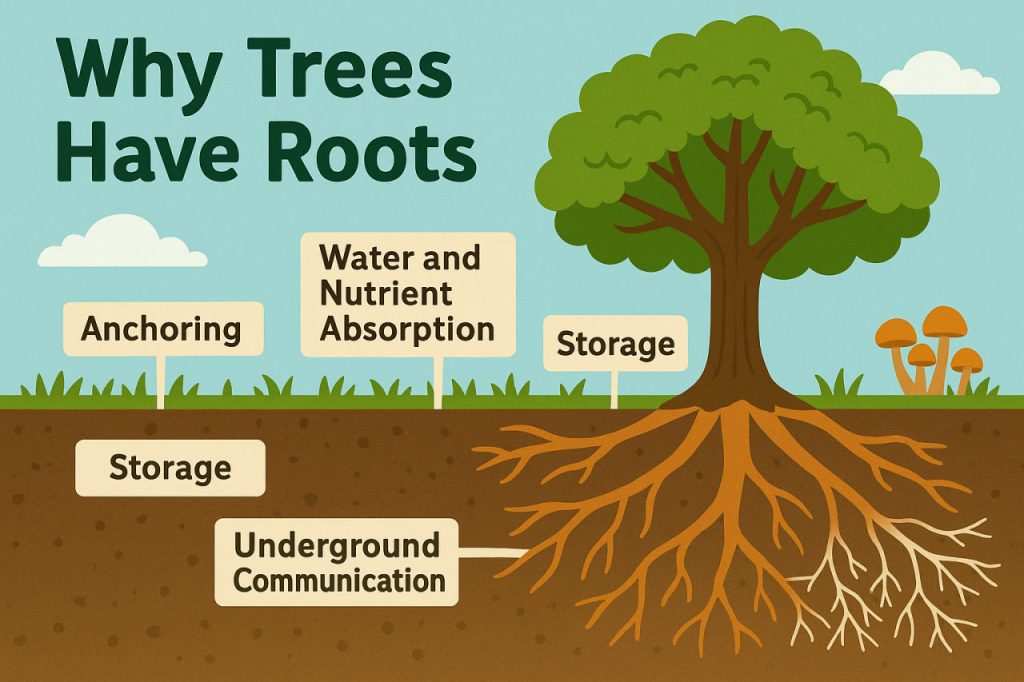Roots are one of the most important parts of a tree, yet they remain largely invisible beneath the soil. These underground structures are not just anchors—they are lifelines. The roots of trees play essential roles in nourishment, stability, communication, and environmental balance, making them vital for the tree’s survival and for healthy ecosystems.
The Main Functions of Roots
Roots have several key functions:
- Anchoring: Roots secure the tree firmly in the ground, preventing it from toppling over in strong winds or heavy rain.
- Water and nutrient absorption: Tiny root hairs absorb water and dissolved minerals from the soil. These nutrients travel upward to feed the entire tree.
- Storage: Roots can store food (sugars and starches) produced through photosynthesis, especially for use during winter or droughts.
- Growth and regeneration: Many trees can regrow from roots if the trunk is damaged, showing their vital role in tree survival.
How Roots Grow and Spread
Tree roots usually spread out more than they grow deep. In fact, roots can stretch two to three times wider than the tree’s crown. Most roots grow in the top layers of soil where water and nutrients are most abundant. Some trees have taproots, which grow straight down to reach deep water reserves, especially in dry environments.
Root systems are dynamic and constantly adjusting to changes in the environment. They can grow toward moisture, avoid obstacles, and expand into new spaces.
Roots and Soil Health
Tree roots help maintain soil structure. As roots grow, they create small air spaces in the soil, which improves drainage and helps other organisms thrive. They also prevent erosion by holding soil in place with a network of fibers.
When roots decay, they enrich the soil with organic matter, supporting the growth of other plants and contributing to a balanced ecosystem.
Underground Communication: The Wood Wide Web
Trees aren’t isolated individuals—they often connect through their roots using fungal networks called mycorrhizae. These fungi form partnerships with roots, exchanging nutrients for sugars. More surprisingly, they act like a natural internet, allowing trees to send signals to each other about drought, pests, or disease.
Older trees, sometimes called “mother trees,” can even nourish young saplings through these underground networks.
Roots and Human Benefits
Strong root systems help manage water runoff, reduce flood risk, and stabilize hillsides. Trees planted in cities improve soil quality and reduce the urban heat effect. Understanding roots also helps gardeners and farmers plant wisely and care for vegetation more effectively.
Glossary
- Minerals – Natural substances in soil that plants need to grow.
- Photosynthesis – The process by which plants convert sunlight into energy.
- Taproot – A thick central root that grows deep into the ground.
- Erosion – The gradual removal of soil by water, wind, or other natural forces.
- Mycorrhizae – Fungi that form beneficial partnerships with plant roots.


